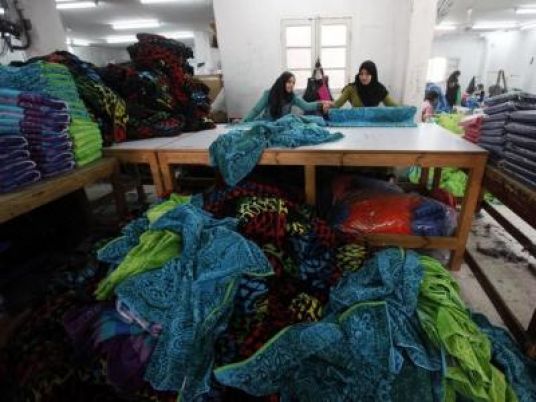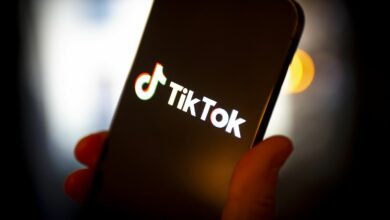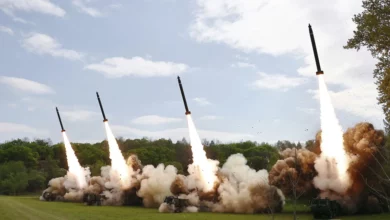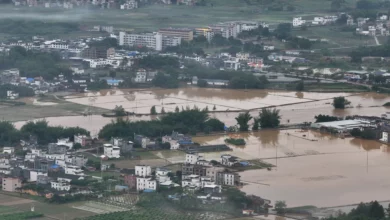
HONG KONG (Reuters) – Hong Kong police fired tear gas to disperse pro-democracy protesters on Saturday after pro-China groups pulled down some of the “Lennon Walls” of anti-government messages posted in the Chinese-ruled city in more than three months of unrest.
The first volley was fired when protesters hurled two petrol bombs toward an approaching police line.
Marchers converged on the town of Tuen Mun, in the west of the New Territories, where some set fire to a Chinese flag as others tore down wooden and metal fences and traffic bollards to build road blocks, at least one of which was set alight.
Some smashed fittings at the Light Rail Transit station, dug up bricks and picked up stones from the sides of the tracks. Others turned fire extinguishers on the police, who made several arrests.
“Radical protesters damaged facilities in Light Rail Town Centre Station in Tuen Mun with metal rods, hurled objects into the Light Rail tracks and set barricades in the vicinity, causing obstruction to the traffic,” police said in a statement.
Related Coverage
Hong Kong police fire tear gas to try to disperse protesters
“Radical protesters also threw petrol bombs, posing a serious threat to the safety of others and police officers.”
Hundreds of protesters retreated from the lines of riot police when the tear gas was fired, many sprinting across a highway to regroup briefly. Others melted away into malls and side-streets.
Dozens of Beijing supporters had earlier torn down some of the large mosaics of colorful sticky notes calling for democracy and denouncing perceived Chinese meddling in the former British colony, which returned to Chinese rule in 1997.
Similar “Lennon Walls” have blossomed across Hong Kong – at bus stops and shopping centers, under footbridges, along pedestrian walkways and at universities. They have also occasionally become hot spots of violence.
A pro-Beijing city legislator, Junius Ho, who has been a vocal critic of the protests, had urged his supporters to clean up approximately 100 Lennon Walls around the city on Saturday.
But in a message posted late on Friday on his Facebook page, Ho said that “for the sake of safety” the Lennon Walls would not be cleared up, only the streets.
REMEMBERING MOB ATTACK
Steve Chiu, who works in finance, said people like Ho would only give the pro-democracy movement fresh impetus.
“Through provocative acts like this, he helps unify the moderates and frontline in the movement,” he told Reuters.
The walls are named after the John Lennon Wall in communist-controlled Prague in the 1980s, which was covered with Beatles lyrics and messages of political grievance.
Hundreds of pro-democracy protesters also gathered, chanting and singing, at a shopping mall near the subway station in Yuen Long, a few km to the northeast of Tuen Mun, to mark two months since activists were attacked by a mob.
On the night of July 21, more than 100 white-shirted men stormed the station and attacked black-clad pro-democracy protesters returning from Hong Kong island as well as passers-by and journalists, wounding 45 people.
Ho was filmed laughing and shaking hands with some of the men in white shirts, but later told reporters he had no knowledge of or involvement in the violence, and had merely been reaching out to his constituents.
Hong Kong’s protests picked up in June over legislation, now withdrawn, that would have allowed suspects to be sent to mainland China for trial. Demands have since broadened into calls for universal suffrage.
The protesters are angry about what they see as creeping Chinese interference in Hong Kong, which returned to China under a “one country, two systems” formula intended to guarantee freedoms that are not enjoyed on the mainland.
China says it is committed to the “one country, two systems” arrangement and denies meddling. It has accused foreign governments including the United States and Britain of inciting the unrest.
The demonstrations have taken on their own rhythm and tend to peak at weekends, often with anti-government activists, many masked and in black, throwing petrol bombs at police, trashing metro stations, blocking airport roads and lighting street fires.
Police have responded with tear gas, water cannon, rubber bullets and live rounds fired into the air, prompting accusations of brutality, which they deny. Amnesty International on Friday said some police treatment of detainees amounted to torture.
Police say they have adhered to regulations in respecting the “privacy, dignity and rights” of those in custody, allowing detainees transport to hospitals and communication with lawyers and families.
Reporting by Greg Torode, Jessie Pang, James Pomfret, Poppy McPherson, Donny Kwok, Clare Jim, Twinnie Siu, Tyrone Siu, Poppy McPherson, Felix Tam, Jorge Silva and Marius Zaharia; Writing by Farah Master and Nick Macfie; Editing by Rob Birsel and Kevin Liffey
Image: A riot police officer is seen in Tuen Mun, Hong Kong, China September 21, 2019. REUTERS/Jorge Silva




